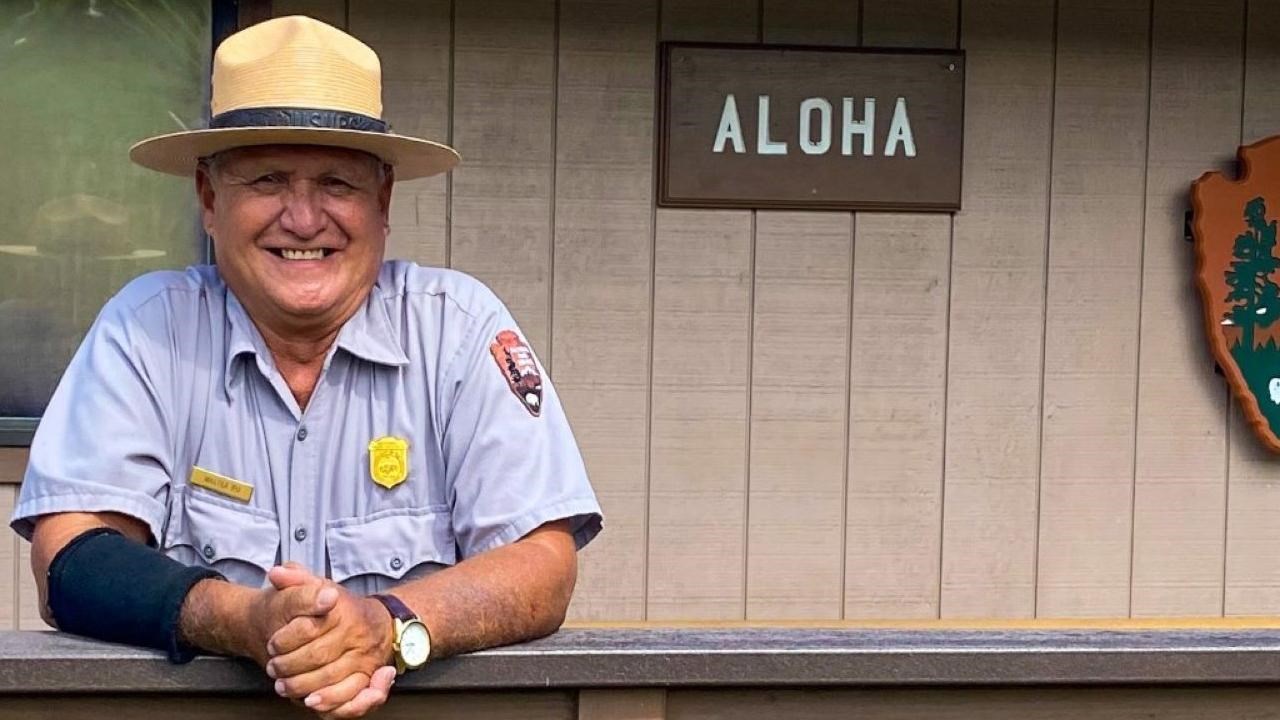Last updated: March 15, 2022
Place
Kūloa Point Trailhead

NPS Photo
Quick Facts
Location:
Kūloa Point Trail
Significance:
Trailhead
Amenities
2 listed
Information Kiosk/Bulletin Board, Trailhead
Welcome to the Kīpahulu District of Haleakalā National Park! We’re glad you’re joining us today for a self-guided walk of the Kūloa Point Trail. As you’ll learn along this trail, for generations Kīpahulu has been a place of community, labor, and rest. We’ll think about what makes a place a home, and how we carry our homes with us wherever we go.
Please remember, Kīpahulu is still a home! It is a home to the generations of Native Hawaiians who live in the area today. It is a home to plants and animals found nowhere else in the world. And it is a home to incredible forces that can shape this place in dramatic ways. For that reason, please be respectful and:
Kīpahulu is one of the few preserved moku districts of Maui. A moku district is a system used by pre-Contact Hawaiians for dividing land and establishing the rule of law. The objects in the visitor center showcase that this is a homeland for people for over too many generations to count. As you continue along this loop trail around the Kūloa point, you can begin to see the importance of Kīpahulu as a home. You can discover plants brought by Polynesian voyagers, observe hale built by early people, and feel the natural beauty of ʻOheʻo Gulch and the vast shoreline of east Maui.
This land has provided for generations of ʻohana (families), and here a sacred bond has formed between people and place. Enter with aloha (respect,) for this is a homeland and you are walking into their cherished house. In this area you will also feel the power of water, which makes up the geographic boundaries of the moku. Fresh water was key to survival, and every moku village had enough water for everyone. It was the ocean from which the early people came to Maui. Waʻa (canoes) were the vessels carrying people and all they needed to establish a home.
Making your way to the next stop think about your homes and what is it that ties you to your ‘āina (land)? What are some ways that one can show aloha (respect) to a place?
Please remember, Kīpahulu is still a home! It is a home to the generations of Native Hawaiians who live in the area today. It is a home to plants and animals found nowhere else in the world. And it is a home to incredible forces that can shape this place in dramatic ways. For that reason, please be respectful and:
- Stay on trail at all times
- Do not disturb natural or archeological sites
- Do not stack or take rocks
Kīpahulu is one of the few preserved moku districts of Maui. A moku district is a system used by pre-Contact Hawaiians for dividing land and establishing the rule of law. The objects in the visitor center showcase that this is a homeland for people for over too many generations to count. As you continue along this loop trail around the Kūloa point, you can begin to see the importance of Kīpahulu as a home. You can discover plants brought by Polynesian voyagers, observe hale built by early people, and feel the natural beauty of ʻOheʻo Gulch and the vast shoreline of east Maui.
This land has provided for generations of ʻohana (families), and here a sacred bond has formed between people and place. Enter with aloha (respect,) for this is a homeland and you are walking into their cherished house. In this area you will also feel the power of water, which makes up the geographic boundaries of the moku. Fresh water was key to survival, and every moku village had enough water for everyone. It was the ocean from which the early people came to Maui. Waʻa (canoes) were the vessels carrying people and all they needed to establish a home.
Making your way to the next stop think about your homes and what is it that ties you to your ‘āina (land)? What are some ways that one can show aloha (respect) to a place?
